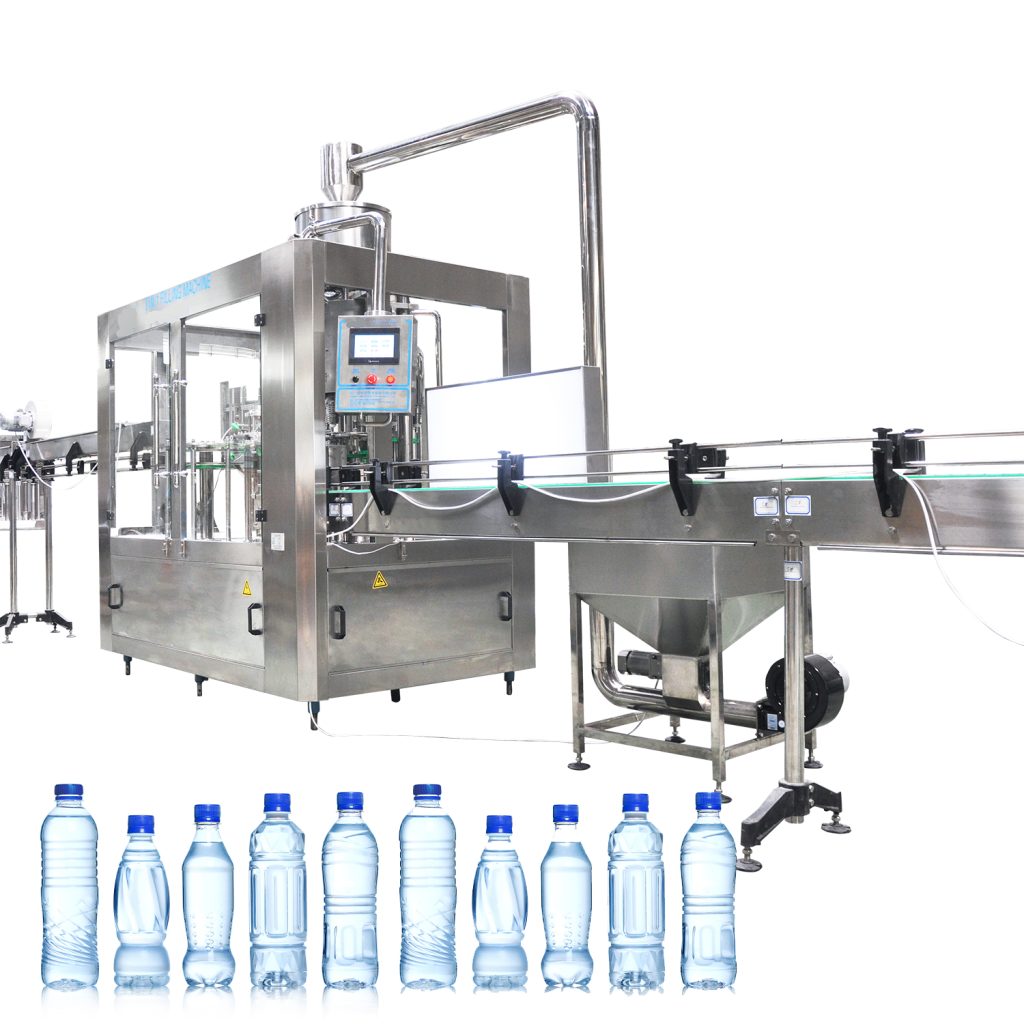An automatic filling machine, also known as a water filling machine, is a highly efficient piece of equipment designed to accurately fill liquids into a variety of containers. It occupies an important position in modern industrial production and is widely used in food and beverage, pharmaceutical, cosmetics, chemical and daily chemicals industries. The introduction of automatic filling machines has significantly improved production efficiency, reduced manual operations and errors, and ensured a consistent amount of liquid in each container, thus improving product quality and production speed.
What are the usage scenarios of filling machines?
Automatic filling machines are widely used in multiple industries. First of all, in the food and beverage industry, automatic filling machines are used to fill various beverages, juices, condiments, sauces and other products. The pharmaceutical industry uses these machines to fill pharmaceutical solutions, syrups and injections to ensure precise dosage and safety. In the cosmetics industry, automatic filling machines are used to fill skin care products, shampoos and conditioners to meet consumers’ high-quality demands for beauty products. In the chemical industry, filling machines are used to fill chemical products such as detergents and paints to ensure the safe and effective use of these products. The daily chemicals industry also widely uses automatic filling machines to fill household chemicals such as detergents and disinfectants to meet various needs in daily life.
The basic working principle of filling machine
The working principle of an automatic filling machine includes several key steps. First, the bottles are fed into the filling area via a conveyor belt or automatic bottle unscrambler. Sensors detect the position of the bottle and ensure it is correctly aligned with the filling nozzle. The liquid then flows into the bottle through the filling nozzle, reaching a preset level or volume. After filling is completed, the bottle moves to the capping position for capping, ensuring the sealing and preservation of the product. Each bottle undergoes quality inspection to ensure that filling quantity and capping quality meet standards. Finally, the qualified bottles are sent out through the conveyor belt and enter the packaging process. Through these steps, the automatic filling machine can complete the liquid filling task efficiently.

What is the mechanism behind a pump filling machine?
Pump filling machine is a common type of automatic filling machine. Its working mechanism mainly includes steps such as pump starting, liquid delivery, filling control and filling stop. The pump is driven by a motor and starts drawing liquid from the tank. The liquid is transported to the filling nozzle through the pipeline, and the sensor and control valve cooperate to accurately control the flow rate and filling volume of the liquid. When the liquid reaches a preset level or volume, the pump stops and the valve closes. This type of filling machine is suitable for situations where precise filling is required due to its high precision and stability, ensuring consistency and quality every time.
What maintenance does an automatic filling machine need?
In order to ensure the efficient operation of the automatic filling machine and extend its service life, regular maintenance is essential. First of all, clean all parts of the filling machine regularly to prevent liquid residue and bacterial growth and maintain the hygienic condition of the equipment. Secondly, lubricate mechanical parts to reduce wear and maintain smooth operation. Regularly check the status of sensors, valves and pumps to ensure they are working properly, and replace damaged or worn parts in a timely manner to prevent failures. In addition, the control system and sensors are regularly calibrated to ensure filling accuracy and avoid product quality degradation caused by accuracy issues. Through these maintenance measures, the failure and shutdown of the filling machine can be effectively prevented and the continuity and stability of production can be ensured.
How to solve common problems in filling machines?
In actual operation, automatic filling machines may encounter some common problems, such as inaccurate filling volume, liquid leakage, sensor failure, and pump failure. For problems with inaccurate filling quantities, first check the sensor and calibration system to ensure they are working properly, and check the pump and valves to clear possible blockages. For liquid leaks, check pipes and joints to make sure they are well sealed, and check valves to make sure they are closed completely. If a sensor fails, you can check the connection and status of the sensor to ensure that it is not damaged. If necessary, replace the faulty sensor in time. If the pump is not working, you need to check the power supply and motor to ensure that they are working properly, and check the status of the pump to clear possible blockages. By solving these problems in time, the stable operation of the filling machine can be ensured and production efficiency can be improved.
What innovations are emerging in automated filling technology?
Automatic filling technology continues to innovate, improving the efficiency, accuracy and sustainability of filling machines. The application of smart sensors can detect and adjust filling parameters in real time and improve filling accuracy. The advanced automated control system makes the filling process more intelligent and efficient, reducing human intervention and errors. The introduction of environmentally friendly and energy-saving technologies reduces energy consumption and wastewater emissions, and improves the sustainability of production. The modular design makes maintenance and upgrades of the filling machine more convenient and reduces downtime. The remote monitoring and diagnosis system is connected through the Internet and can monitor the operating status of the filling machine in real time and detect and solve problems in a timely manner. The efficient filling head design reduces liquid splashing and waste and improves filling efficiency. These innovations have made the application of automatic filling machines more extensive and efficient in various industries, providing better solutions for production companies.

